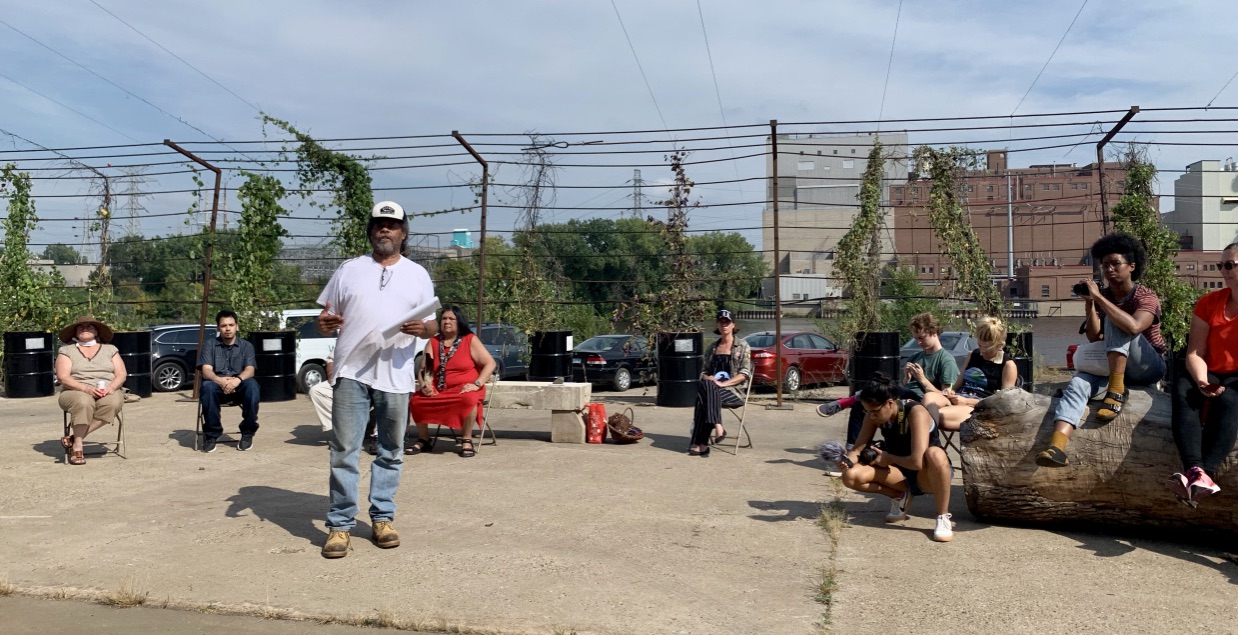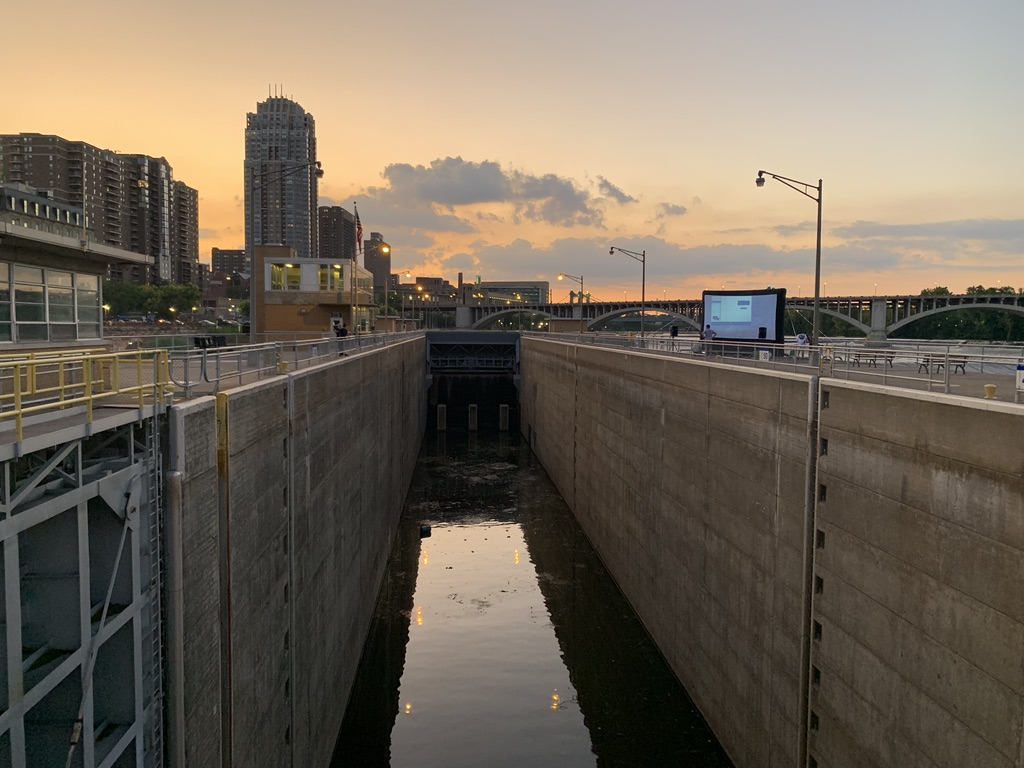When Doves Cry: Project Sweetie Pie
Invoking the words of three of Minneapolis’ native sons, activist Michael Chaney, poet Joe Davies, and Prince, Louise Carver for Temporary continent. writes of the various windows of “opportunity” associated with speculation focused on the city’s riverside, as highlighted during the activities of Field Station 1—but also how such a moment can be understood as a source of hope in terms of environmental justice.

“I love America more than any other country in the world, and, exactly for this reason, I insist on the right to criticize her perpetually.”
James Baldwin, Notes of a Native Son
North Minneapolis is going green!
Give us a call and learn what we mean
Where once lied urban blight now sits luscious garden site
Gardens without borders
Classrooms without walls
Architects of our own destinies
Access to food, justice for all
Michael Chaney, Project Sweetie Pie/ Minneapolis & St Paul.
Arriving in Minneapolis, the Anthropocene River Project is at its first Field Station for less than a day, and Michael Chaney has been on my mind for almost 12 hours—the time that has lapsed since we spoke last night. Activist and organizer, founder and Executive Director of non-profit Minneapolis urban farming and community educational initiative Project Sweetie Pie, Michael incited our riverside congregations in the early afternoon with impassioned poetry, history and river politics — defying the growl of passing truck engines. Michael informed the cohort of Field Station 1 during the afternoon about the community resistance to the so called community benefiting private development of a 20,000 seat auditorium over the Upper Harbor Terminal site in a re-visioning of the riverside. Three hours after his evening appearance, Michael would be clocking in for the night shift with affordable housing residents, before another day of food, educational and community justice advocacy.
Michael Chaney addressing visitors to the Upper Harbor Terminal site at Mississippi Mushrooms Photograph by Louise Carver
There is cause for hope, Michael explained, invoking African American author James Baldwin, and referring to the running waters flowing downriver, past us—“the native son is never recognized in his own home town.” Gatherings, along the upper terminal banks of the Mississippi River in the Twin Cities, and further down at St Anthony’s Lock and Dam affirm recognition and acknowledgment of the great American river, the history and the possibility that is the Mississippi. We hear, repeatedly, how this river — also America’s native son, or Native American daughter, mother, grandmother and relative — is so much more than mere backdrop. Joe Davies, Minneapolis cultural architect, poet and educator, who helps Project Sweetie Pie bring people down to the riverside, shares with us how still easily forgotten her flow seems to now be.
Collectively reflecting on speculations for The Future of the River through panel discussions under a Friday-night fading sun, we learned about the layered value making the Mississippi affords some within and beyond immediate Twin Cities’ communities. Morgan Adamson tells of the windows of opportunity opening on marketable views packaged up by real estate developers in the wake of de-industrialization in Minneapolis. Such are the river’s privatized amenity values that have come to replace its milling and machinic heritage. Similarly, Bruce Braun, reminds us of the multiple futures that are being imagined, simultaneously and dis-harmoniously. The recently closed Lock and Dam we are standing on, in Dakota language Owámniomni (“turbulent waters,” aka St. Anthony Falls) is under public disposition for its future: Tear down its walls and return this water flow to one which had nurtured the Dakota sacred site? Or retain this site as a visitor attraction of engineering prowess and marker of Army Corps of Engineers’ history?
Lock and Dam No. 1 at St. Anthony's Falls Photograph by Louise Carver
Michael Chaney, is on my mind, on this lock and dam. He tells us that this moment precipitates a once in a lifetime opportunity—a metaphorical Mississippi lighthouse, “for environmental justice and all things ecological” which could emerge here, at Minneapolis-St. Paul, that would inspire other moments and other opportunities downstream, throughout the rest of the river’s meanderings.
Development schemes often entangle with the words “reclaim, restore, renew.” The conversations over Field Station 1 in the Twin Cities also highlight that these are words that must also provoke reflection over past decisions, previous junctures in the river’s direction making. Perhaps this might be done by adding other “re” words to this list—recognition for a native son or daughter. Reparations for past wrongs. The ambiguity of Prince’s words, another of Minneapolis’ native sons, seem apt—a dove’s cry is thought to be both a symbol of past mourning but also of peace and hope for coming futures.
It is 8:00 AM on Saturday morning of Field Station 1—the morning after the first day, and the end of Michael Chaney’s night shift. As I pen these thoughts, Michael has emailed me, and several others who made connections the night before:
There is cause for hope Michael reminds us, as Field Station 1: Sediment, Settlement, Sentiment sets the scene for our ongoing journey.


